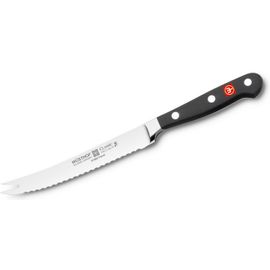- Joined
- Oct 30, 2018
- Messages
- 219
So here’s a silly thread for a rainy (in the UK) Saturday afternoon, on a topic that has niggled me for ages.
What the hell is it with people slicing tomatoes on YouTube? At the point that my knives need sharpening they’ll still slice a tomato...
A more serious point on this as well. People always claim that a less refined edge is better for cutting a tomato as it doesn’t ‘slide’ off the skin. Well my knives in the kitchen sharpened to 6000 JIS slice a tomato skin just fine, better than fine in fact. Just to note I’ve also just dropped a tomato from a couple of inches above the blade on a newly sharpened knife and one that needed sharpening. Surprise they both cleanly slice said tomato.
yes - I’m sitting here in lockdown and I’m bored, hence why I’m talking about tomatoes.
have a good weekend!
What the hell is it with people slicing tomatoes on YouTube? At the point that my knives need sharpening they’ll still slice a tomato...
A more serious point on this as well. People always claim that a less refined edge is better for cutting a tomato as it doesn’t ‘slide’ off the skin. Well my knives in the kitchen sharpened to 6000 JIS slice a tomato skin just fine, better than fine in fact. Just to note I’ve also just dropped a tomato from a couple of inches above the blade on a newly sharpened knife and one that needed sharpening. Surprise they both cleanly slice said tomato.
yes - I’m sitting here in lockdown and I’m bored, hence why I’m talking about tomatoes.
have a good weekend!

